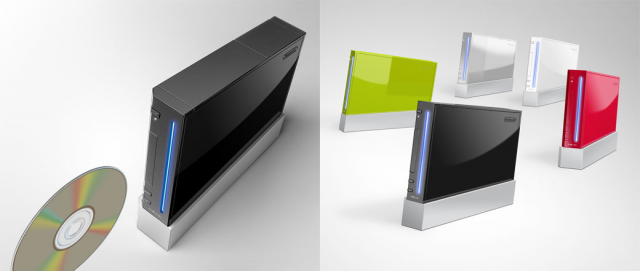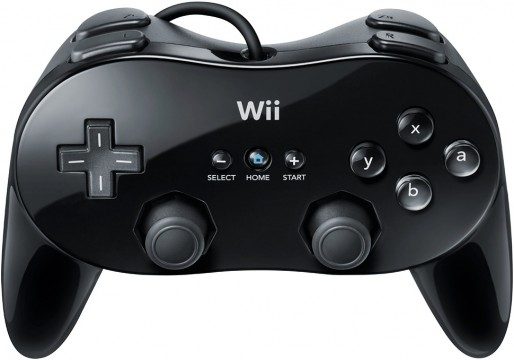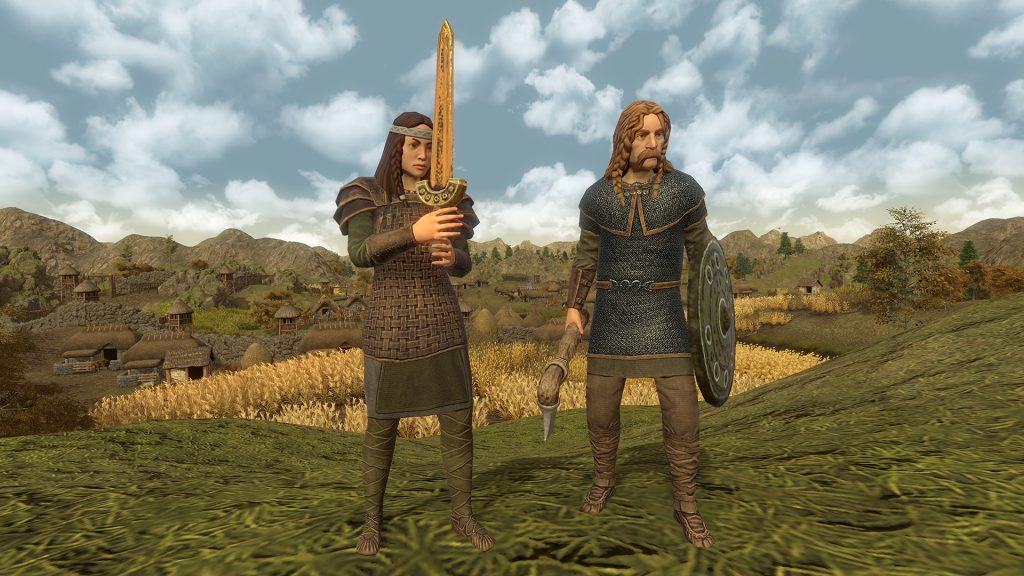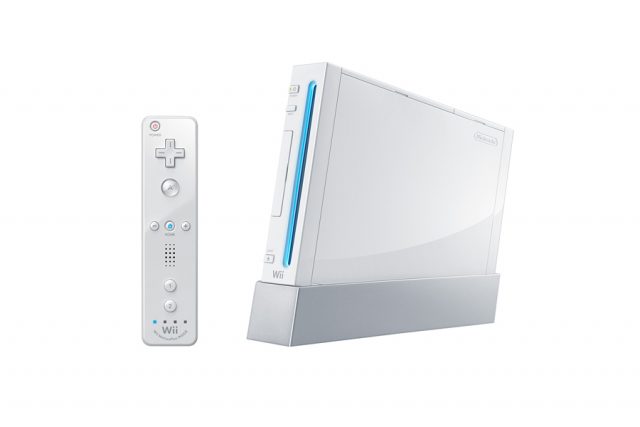
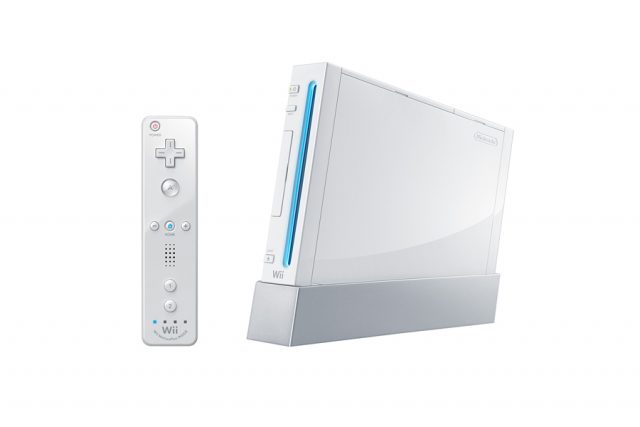
Wii launched in November of 2006. It was my sophomore year of college and, while I desperately wanted one, the console was impossible to find for many months after release. Finding a Wii in the wild was harder than spotting a unicorn. Eventually, my sister, aunt, and I stumbled upon one by chance at a local GameStop right around the start of summer that year. We swooped on it and took it home, quickly learning that Nintendo’s new console was the game-changer it was billed as.
When Wii was unveiled during E3 2005, the system itself, dubbed “Revolution,” was shown off—but not the controller. That would have to wait until Tokyo Game Show in September when then-president of Nintendo Satoru Iwata made the big reveal, which revolved around the device’s motion-sensing capabilities. Finally, right prior to E3 2006, Nintendo announced that Revolution would be sold under a completely different name: Nintendo Wii.
Early images of Wii from E3 2005.
The moniker was met with derision from a number of different media outlets who perceived the name as a potential turnoff to consumers. Wii is certainly a name that people are more than familiar with now, but at the time it definitely sounded odd rolling off the tongue. However, let’s provide some context for those who might be unfamiliar with the circumstances surrounding Nintendo at that point.
To begin with, those two lowercase “i”s were a very clear way of indirectly connecting Wii to Apple’s iPod line. In the early 2000s, iPod had taken the world by storm with a variety of music-playing devices that continued to evolve and do different things. Nintendo, meanwhile, was struggling after the commercial failure of GameCube. GameCube simply did not live up to expectations and much was riding on Wii doing well if Nintendo wanted to continue on as a hardware manufacturer. The unusual naming convention of Wii took a page from Apple (the iPod branding itself was atypical when it launched, after all) and lent the product some borrowed hype at a time when consumer confidence in Nintendo was waning.
Even the white coloring of the console is largely attributed to Nintendo wanting to emulate Apple (the original iPod’s white colorway was highly iconic and influenced electronics designs for years to come). Latching onto Apple, even if only tangentially, was a way of helping to draw extra eyes onto Wii prior to launch. The name was symbolic beyond comparisons to Apple, however. As a homophone for “we,” Wii was meant to assert the multiplayer aspect of the hardware. This was a console designed to bring people together.
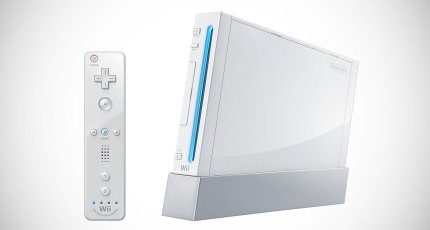 All of this creative marketing and branding would pay off, but there are other critical factors that helped to position Wii for a successful run. One thing that really stands out in retrospect is the Wii Remote itself. Iwata spoke at length about the importance of Wii being a console that would become a mainstay in people’s homes not unlike a television set is. Indeed, it was at Iwata’s insistence that the controller was called a remote at all. Iwata’s reasoning was that certain gaming conventions that players take for granted were off putting to others. Calling the controller a remote reaffirmed the TV connection (and he felt would also make the device less objectionable to wary mothers).
All of this creative marketing and branding would pay off, but there are other critical factors that helped to position Wii for a successful run. One thing that really stands out in retrospect is the Wii Remote itself. Iwata spoke at length about the importance of Wii being a console that would become a mainstay in people’s homes not unlike a television set is. Indeed, it was at Iwata’s insistence that the controller was called a remote at all. Iwata’s reasoning was that certain gaming conventions that players take for granted were off putting to others. Calling the controller a remote reaffirmed the TV connection (and he felt would also make the device less objectionable to wary mothers).
Another positive in favor of Wii was the form factor of the Wii Remotes. Although they can be held in a more conventional horizontal manner, Wii Remotes, especially when playing the pack-in title Wii Sports, are typically held vertically like a TV remote. That might sound like a trivial detail, but it’s exactly why the Wii Remote was so welcoming to new and casual players. It was more natural to this incoming crowd of players to hold something that felt like a TV remote and not a game controller. Throw in that the controllers were wireless, which made setting up game matches with multiple players even easier than traditional pads with wires, and just about anyone could join in with ease.
That all in turn leads us to the title that would change gaming forever: Wii Sports. It wasn’t the first time a Nintendo home console launched without Mario, as GameCube already had that honor with Luigi’s Mansion. For Wii, though, it would go a step further and release with a pack-in game that had nothing to do with a preexisting Nintendo franchise. Keep in mind that The Legend of Zelda: Twilight Princess launched alongside Wii but that it wasn’t the game Nintendo chose to lead with. Granted, part of that can be attributed to the fact that Twilight Princess was going to be a big seller without being a pack-in, but the primary factor was that Wii Sports was predicted to appeal to a broader demographic than Zelda ever would.
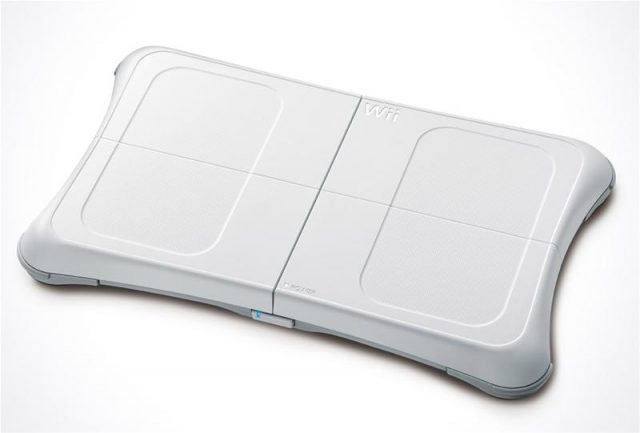 This strategy wasn’t without precedent. Famously, Nintendo opted to launch Game Boy with Tetris and not Super Mario Land at the behest of Henk Rogers, who opined that Mario might sell the handheld to little boys, but Tetris would sell it to everyone. Like Tetris, Wii Sports sold Wii to everyone. The name itself was nonthreatening to casual and new gamers—nearly everyone knows what sports are, after all. And the sports included on the disc were similarly straightforward: golf, baseball, tennis, boxing, and bowling are familiar to most people, even if just on a cursory level.
This strategy wasn’t without precedent. Famously, Nintendo opted to launch Game Boy with Tetris and not Super Mario Land at the behest of Henk Rogers, who opined that Mario might sell the handheld to little boys, but Tetris would sell it to everyone. Like Tetris, Wii Sports sold Wii to everyone. The name itself was nonthreatening to casual and new gamers—nearly everyone knows what sports are, after all. And the sports included on the disc were similarly straightforward: golf, baseball, tennis, boxing, and bowling are familiar to most people, even if just on a cursory level.
Engaging with the games is where the real magic of Wii became apparent. Sure, people know what tennis is, but it doesn’t immediately follow that they can jump into a match of video game tennis—unless that video game was Wii Sports. The reason being that in order to play Wii Sports, all anyone had to do was swing the Wii Remote like an actual tennis racket. The physical motion of swinging the controller and swinging a racket are almost identical, which meant even the most video game-illiterate player could participate with no problem. Even when button prompts were required, the simple interface of the Wii Remote made it a breeze to learn (bolstered by on-screen prompts that helped players right in the middle of the action).
It didn’t take long for Wii to go from a question mark among media pundits to a sensation that swept the world. As has been talked about at great length in the years since, Wii didn’t just reinvigorate Nintendo as a company, it also introduced video games to an entirely new crowd of people. I’ve mentioned casual players a number of times now because it is a demographic that was largely cultivated by Wii. Grandparents. Moms and dads. Executives. Line chefs at Denny’s. Doctors. The variety of names, faces, vocations, and creeds that played Wii was unlike anything anyone had ever seen. Video games had long been a major part of the entertainment industry as far back as the late 1970s, but with Wii they entered into the mainstream like never before.
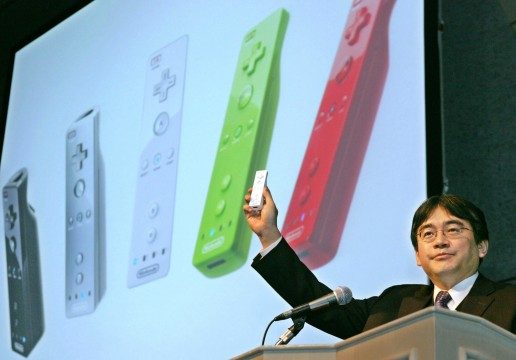 It was a perfect storm for the launch of Wii that likely won’t be replicated again, at least not anytime soon. 2006 was a world where iPhone didn’t exist. Even after iPhone launched, it took a while before smartphones became the ubiquitous devices that they are now. The casual gamer eventually migrated away from Wii and largely turned to their phones for gaming, but for that period of time when Wii was in its prime, it was the port they called home for digital curiosities.
It was a perfect storm for the launch of Wii that likely won’t be replicated again, at least not anytime soon. 2006 was a world where iPhone didn’t exist. Even after iPhone launched, it took a while before smartphones became the ubiquitous devices that they are now. The casual gamer eventually migrated away from Wii and largely turned to their phones for gaming, but for that period of time when Wii was in its prime, it was the port they called home for digital curiosities.
It was also during this generation of game consoles that EA and Activision series Rock Band and Guitar Hero, respectively, further expanded the casual gaming market. Alternative control schemes rapidly became all the rage, and strumming along to music with plastic guitars was a natural fit on Wii, especially. Even the toys-to-life phenomenon made its way to Wii with the Skylanders franchise.
Wii Fit was another major launch for Wii that would really cement the console as a game system like no other. Using the Balance Board, a wireless peripheral that players could stand atop and engage in everything from sit-ups to yoga stretches, Wii Fit helped countless people gameify fitness into manageable daily sessions. It didn’t offer the most grueling workouts, but it could get a person’s heart rate elevated and was fun—something that many fitness games continue to fail at. If Iwata’s goal was to turn Wii into a focal point of people’s lives, Wii Fit was proof positive that he’d succeeded.
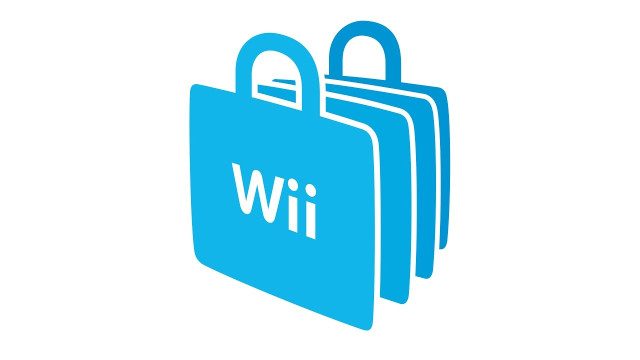 On the negative side, core gamers, including those among the Nintendo faithful, experienced some growing pains with Nintendo during the Wii era. The company quickly pounced on its newfound popularity with the fresh-faced casual crowd by producing software it believed would appeal to them. Games like Wii Motion, Wii Party, Wii Music, and Wii Sports Resort, while fun for anyone, were far from the sort of experiences that “seasoned” (as Nintendo called them) players are drawn to.
On the negative side, core gamers, including those among the Nintendo faithful, experienced some growing pains with Nintendo during the Wii era. The company quickly pounced on its newfound popularity with the fresh-faced casual crowd by producing software it believed would appeal to them. Games like Wii Motion, Wii Party, Wii Music, and Wii Sports Resort, while fun for anyone, were far from the sort of experiences that “seasoned” (as Nintendo called them) players are drawn to.
Eventually, though, Nintendo began trying to level things off midway through the console’s lifecycle. Legacy series like Donkey Kong Country made a surprise return, and occasional third-party titles like The Conduit, MadWorld, Red Steel, No More Heroes, and more all helped to bring a semblance of balance to the casual overload. There was another saving grace to core gamers that was critical: the Wii Shop Channel and WiiWare.
DSiWare paved the way for smaller developers to produce software that would be sold and downloaded via an Internet connection, but Wii took the basics of that platform and expanded upon them. Games were bigger, allowing for greater innovation and creativity from developers. Titles like World of Goo, Jett Rocket, Toki Tori, and many, many others all offered a mix of classic game experiences as well as new ones thanks to Wii’s motion controls. Even longtime devs like Konami and Capcom brought games to the service like Castlevania: The Adventure ReBirth and Mega Man 9, respectively.
 Another crucial development was the introduction of Virtual Console. Unlike today’s rental model being utilized by Nintendo Switch Online, consumers could purchase a range of classic video games to download onto their consoles. NES, SNES, Nintendo 64, SEGA Genesis, NEO GEO, and even retro arcade titles were all available. For retro enthusiasts and fans wanting to experience the past of gaming it was a major thrill to have so much classic software on offer. Sadly, it took many years for some games to come to the marketplace, with others never showing up at all. Despite limited marketing and a slightly spotty selection of games, Virtual Console provided a lot of titles that were largely unavailable elsewhere and helped to diversify Wii’s own software library.
Another crucial development was the introduction of Virtual Console. Unlike today’s rental model being utilized by Nintendo Switch Online, consumers could purchase a range of classic video games to download onto their consoles. NES, SNES, Nintendo 64, SEGA Genesis, NEO GEO, and even retro arcade titles were all available. For retro enthusiasts and fans wanting to experience the past of gaming it was a major thrill to have so much classic software on offer. Sadly, it took many years for some games to come to the marketplace, with others never showing up at all. Despite limited marketing and a slightly spotty selection of games, Virtual Console provided a lot of titles that were largely unavailable elsewhere and helped to diversify Wii’s own software library.
Any discussion about Wii would be incomplete without mentioning the litany of accessories and peripherals that came to the console. The Balance Board is arguably the most famous of the bunch, but there were plenty of others, official and otherwise. Nintendo produced the Wii Zapper which released along with the Zelda spin-off title Link’s Crossbow Training. Updated motion controls came via the detachable Motion Plus add-on, which was eventually just included internally in overhauled Wii Remotes. Beyond these, however, was an endless barrage of plastic tennis rackets, golf clubs, baseball bats, and more that could be snapped onto a Wii Remote to enhance the sense of immersion (for some). Light gun-style games were also fairly plentiful on Wii and any number of fake blasters and firearms were produced. It was a veritable plastic tchotchke utopia.
Although popular for many years, eventually Wii’s star began to fade. By the early 2010s the proliferation of smartphones and tablets had started to leech away much of the casual crowd that had flocked so vigorously to Wii. Wii was also notorious for its sub-HD visuals. As more powerful TVs and consoles continued to hit the market, Wii’s quirky underpowered hardware became a difficult sell for third-party developers.
A Wii Classic Controller Pro, which came in handy for Virtual Console game, Smash Bros., and more.
In 2012 Nintendo launched Wii’s successor, Wii U, and although it quickly sold out at launch, the system struggled long term to lure consumers. The console’s PlayStation 3-level processing power came out of the gates a full generation behind and resulted in a dearth of third-party software. It also didn’t help that Wii U’s GamePad, although innovative in some ways, failed to sell its gimmick very well. In fact, the debut of the GamePad confused many who saw it, as people were under the impression that it could be played anywhere not unlike a Switch. Although the console maintained motion controls, it didn’t have the same allure that Wii did six years prior. Nintendo made a go of it until 2017, but Wii U was ultimately supplanted by Switch and the rest, as they say, is history.
It’s hard to believe that 15 years have passed since Wii became a staple of gamer’s households around the world. Time flies when you’re waggling a Wii Remote, it would seem. I certainly have a lot of love for Nintendo’s oddball console. It embodied the design tenants of Game & Watch and Game Boy inventor Gunpei Yokoi, who believed in utilizing old or “withered” technology in fresh, exciting ways. Wii was a bold departure for Nintendo and reinvented what video games could be. Happy anniversary, Wii.
The post Looking Back at Wii 15 Years Later appeared first on Nintendojo.
